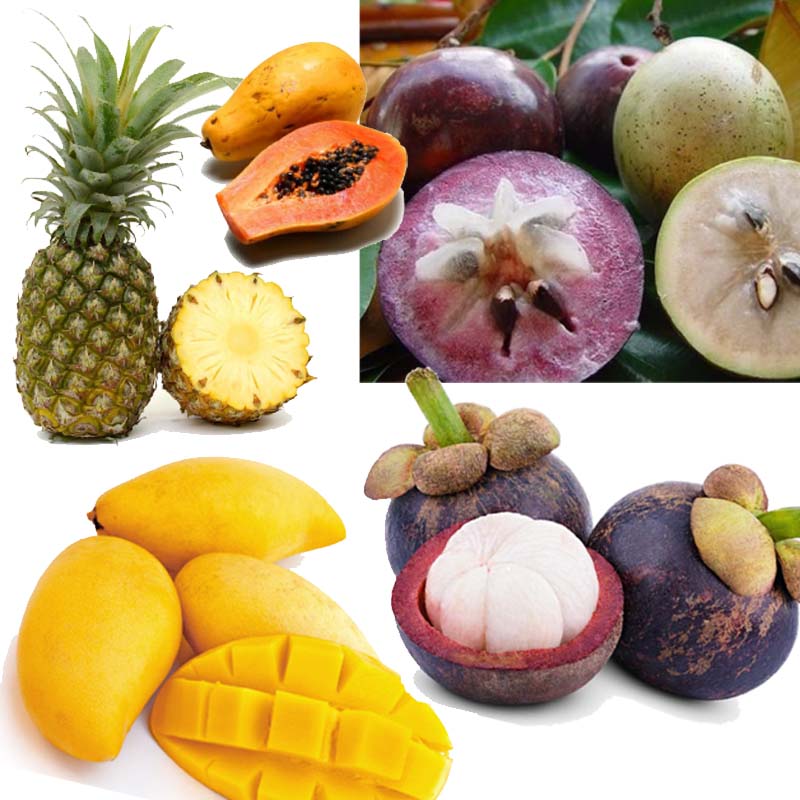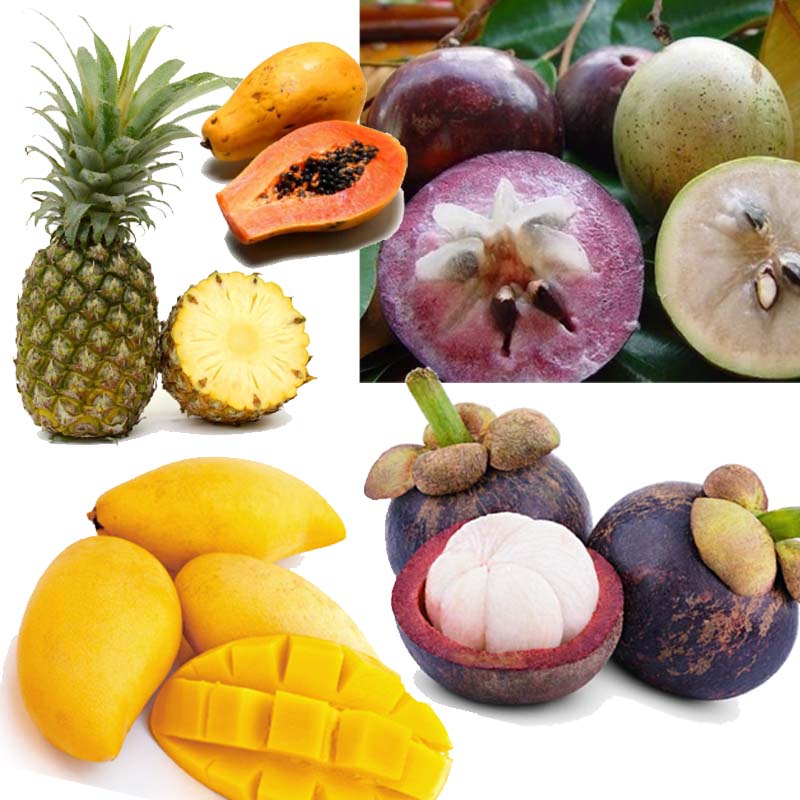
The Philippines is abundant with fruits all year round. There is no reason for a Filipino not to eat a piece of fruit during every meal. I encourage everyone to make eating fruits or drinking fresh fruit juice a daily meal habit.
For those already in the habit, have you ever tried to be a fruitarian for a day? Meaning eating only fruits or drinking fresh fruit juice without added sugar all day. This is one of the cleansing diets I recommend for detoxifying our bodies at least once a month. Try it and you will feel a significant difference in your physical, mental and emotional health.
Now, here is another list of Philippine fruits that heal.
Kasoy (Anacardium occidentale L.) The fresh fruit is rich in vitamin C. The nuts are rich in oil. Young cashew leaves, which are high in vitamins A and C, are eaten as a salad with fish sauce, tomatoes and onions. When eating the fruit, the pericarp (which contains poisonous oils cardol and anacardic acid that causes itching and skin irritation) is removed first and only the inner core of the fruit is consumed.
The recommended medicinal use of this fruit is for sore gums and toothache. Gargle a diluted infusion of leaves and retain in the mouth for a few minutes. Do not swallow the solution. Our traditional healers have used the nut’s oil for blisters, corns and sores. The inside of the outer cover of the nut contains a caustic solution that burns the skin, which is used to remove warts and moles. The fruit juice is consumed to induce perspiration and increase the amount of urine. A tincture of the fruit is taken to expel intestinal worms.
Kaymito (Chrysophyllum cainito L.) The fruit contains sugar and fiber. The bark, leaves and stem contain tannin. The leaves also contain alkaloids and a bitter principle. The seeds contain saponin and also a bitter principle. Its recommended medicinal use is for diarrhea. Eat the ripe fruit as tolerated or boil two handfuls of chopped fresh leaves in two glasses of water for 15 minutes. Cool and strain. Divide decoction into four parts. Take one part every two to three hours.
Mangga (Mangifera indica L.) The fruit and young leaf tops are excellent sources of vitamins A, B and C. The leaves contain volatile oil, which has been found to be effective for cough. Boil over a low flame some chopped young leaves in two glasses of water for 15 minutes. Cool and strain. Divide the decoction into three parts and take one part three times a day. Traditional healers prescribe the ripe fruits to relieve indigestion and constipation. The decoction of the seed and bark is used as a wound wash.
Mangosteen (Garcinia mangostana L.) The rind of the fruit is mainly used for diarrhea. Boil the chopped fruit rind in two glasses of water for 15 minutes then cool and strain. Divide the decoction into four parts and take one part every two to three hours. Traditionally, the decoction of the bark and leaves is consumed for fever while the decoction of the fruit rind is used as a wound wash. After eating the white fruit pulp, scrape the inner core of the fruit, colored violet, which is the part of the fruit that has the highest amount of the anti-oxidant, xanthones. The taste is very acrid. Boil this portion of the fruit. For every cup of the scraped core, add two cups of water, boil over low flame for 15 minutes, then add honey, coconut sugar, stevia or any fresh fruit juice to hide the acrid taste.
Oranges. All kinds of oranges are grown in the Philippines, such as dalanghita, dayap, kabuyaw, kalamansi, sintones and suha. They all belong to the botanical family Rutaceae and the species Citrus.
The fruit pulp contains vitamins A, B and C, as well as citric acid, iron, calcium, phosphorus, potassium, hesperidin, protein, sugar, peroxidase and pectin. The rind has volatile oils, citral, aldehydes, tannin, pectin, peroxidase and glucosides. The leaves contain volatile oil. Recommended medicinal uses of citrus fruits include for nausea and fainting. Squeeze a piece of fresh rind and let the person inhale it.
As an aromatic bath, squeeze the fruit juice into water and use as a bath. Boil two handfuls of fresh leaves in a big pot of water for five minutes, then cool. Use decoction as bath. This is especially good for a mother who has just given birth or a person recovering from illness. For use on fever, cough and sore throat as a cooling drink, squeeze fresh fruit in a glass of water then add sugar to taste and drink.
Papaya (Carica papaya L.). The ripe fruit is an excellent source of vitamins A, B and C. It also contains a fair amount of iron and calcium. The green fruit is a good source of vitamin B and the leaves contain calcium. Research shows that papain, a proteolytic enzyme that has laxative, anti-helminthic and anti-inflammatory properties, is found in the roots, stem, leaf and fruit of papaya. Recommended medicinal uses include preventing debridement and removing purulent exudates and blood clots from wounds and ulcers. Apply a latex of unripe fruit or trunk on the wound or ulcer and wash off after 15 minutes. For constipation, eat the ripe fruit liberally.
Pinya or Pineapple (Ananas comosus L.).The ripe fruit is an excellent source of vitamin A, has a good amount of vitamin B and some calcium and iron. Research shows that the juice is a source of the enzyme, bromelin, which is anti-helminthic and anti-inflammatory. Detectable amounts of pectic substances in the leaves have also been found. Our traditional healers have used the juice of the leaves and the flesh of young fruits to expel intestinal worms.
